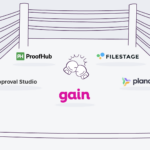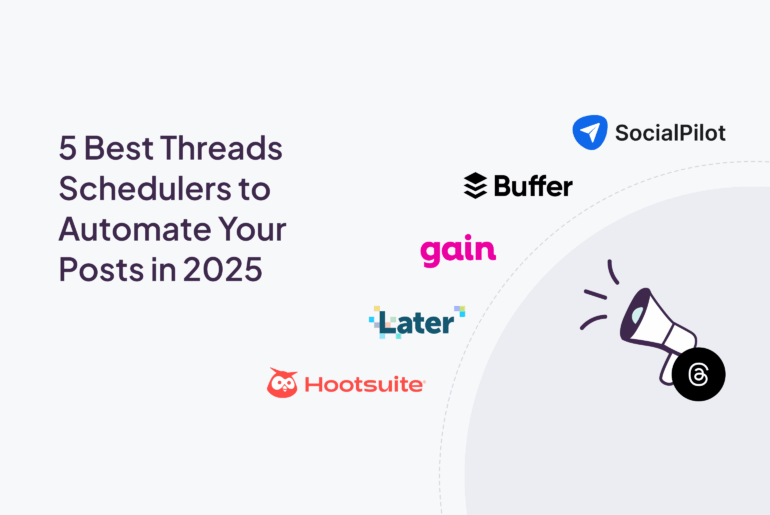Photo by fauxels
In the world of marketing, working together as a team is key. But sometimes marketers, agencies, and creative teams struggle to keep everyone on the same page. They have lots of tasks and projects to handle, and they might be working with many clients at the same time.
This is where collaboration software for working together comes in. It helps make the work process smoother, makes people more productive, and encourages new ideas.
But what does it mean and how does it work? Here we will explore the details.
What is Collaboration Software?
In the context of marketing, collaboration software refers to digital tools and platforms designed to facilitate and enhance communication, coordination, and teamwork among marketing professionals.
At its core, collaboration software creates a virtual workspace that bridges the communication gap and fosters a collaborative culture within the organization. These tools let team members join forces on projects, share thoughts, handle tasks, and make things smoother.
Above all, using collaboration software makes marketing campaigns and plans work better and faster.
Benefits of Using Collaboration Software
The benefits of using collaboration software extend far beyond enhancing communication.
Here are a couple of reasons why you should use team collaboration software:
Data Centralization
One main benefit is that collaboration software brings all data together, putting all communication, files, tasks, and updates in one place. This helps prevent information from getting lost in many emails or messages, making sure everyone on the team has the same information at once.
Think about a situation where a team is working on a complicated project with many different parts. Without collaboration software, team members would need to manage different ways of talking, like email, instant messaging, and shared folders, to follow project updates and files. This scattered way not only uses up time but also raises the risk of misunderstandings and mistakes.
Productivity and Efficiency
According to one study, 56% of individuals believe that digital tools make the workplace more efficient. Collaboration software is one of these tools. It doesn’t just make tasks that we do over and over again easier, but it also helps manage projects better and smoother.
For example, instead of manually assigning tasks and tracking progress, collaboration software allows team leaders to create automated workflows. These workflows can automatically assign tasks based on predefined rules, send reminders for upcoming deadlines, and even generate reports on project status.
Innovation and Idea Sharing
Additionally, collaboration software provides a platform for brainstorming and idea sharing among marketing team members. Through virtual whiteboards, discussion threads, and collaborative spaces, marketers can collectively develop creative campaigns and innovative solutions.
Efficient Content Collaboration and Approval Workflows
Many marketing teams have a hard time creating content and getting it approved by clients in a timely manner. This could be creating images for social media or writing ads. Then, waiting for clients to give feedback can make your work even slower. Worse, your clients might not respond at all.
Collaboration software makes these things more manageable. It keeps all the content together, helps track different versions, and lets you set up how your marketing content gets approved. This helps projects go smoother and keeps the content consistent.
Related Read: Top 5 Approval Software Tools for Marketing Agencies
Enhanced Cross-Functional Alignment
Lastly, collaboration software enables marketers to work closely with other departments, such as sales, product development, and customer service. This alignment fosters a better understanding of customer needs, leading to more targeted marketing strategies and improved customer experiences.
Common Types of Collaboration Software
Collaboration software varies significantly depending on the needs it is designed to meet.
Some solutions may merely focus on communication, while others may offer a more extensive suite of tools. Here are the most common types:
- Communication Tools (for example, Slack and Microsoft Teams): These are designed to facilitate real-time communication through instant messaging, email, video conferencing, and social media integrations.
- Project and Task Management Tools: They are used for planning, organizing, and tracking project progress. They may include features such as to-do lists, Gantt charts, and time tracking. Some of the popular project management tools are Asana and Trello.
- Document Collaboration Tools: These primarily focus on creating, sharing, and storing documents online for members to collaborate and comment on.
- Social Collaboration Tools: These are often used to foster a sense of community within teams or organizations. They may include features such as forums and virtual meeting spaces.
These tools work for pretty much any remote or hybrid team irrespective of the industry. But if you’re someone who does marketing, it could be helpful to consider using collaboration software that has features for managing projects, creating content, and integrating with social media.
Best Team Collaboration Tools for Marketers
So, what kinds of tools can creative teams use every day to work together?
Here are a few examples (divided into categories) of robust collaboration tools that are suitable for marketers:
Project Management
Monday.com: A versatile project management platform that enables teams to manage projects, tasks, and workflows. Marketers can use it to plan campaigns, track content production, allocate resources, and monitor project status in real time.
Basecamp is a project management and team collaboration tool that focuses on simplicity and ease of use. It provides a streamlined platform for teams to manage projects, tasks, and communication in a straightforward manner.
Social Media Management
Gain is a social media management platform designed to streamline collaboration and approval processes for content creation and scheduling. It is particularly suitable for creative teams and marketing professionals who need a robust tool to manage multiple clients’ social media content effectively.
Team Communication
Flock: A team communication and collaboration platform that provides chat, video conferencing, and shared to-do lists. It’s suitable for marketers to discuss campaigns, share files, and keep track of project progress.
Design
Canva: A collaborative graphic design tool that allows marketers and designers to create, edit, and share designs, templates, and brand assets in real time.
Figma: An online design and prototyping tool that allows real-time collaboration on design projects. Creative teams can work together on UI/UX design, create interactive prototypes, and provide feedback seamlessly.
Collaborative Content Creation
Google Workspace: A suite of productivity tools including Google Docs, Sheets, and Slides that enables real-time collaboration on documents, spreadsheets, and presentations.
Notion: A versatile workspace tool that combines note-taking, task management, and collaboration features. Creative teams can use it to create content outlines, gather research, and collaborate on writing projects.
Wrapping Up
That’s everything! You’ve learned about collaboration software, including what it is, the different tools you can use, and how they can help you.
If you need a robust collaborative tool for managing social media and working together with your team and clients, consider trying out Gain.
Test it out for free. No credit card required.






